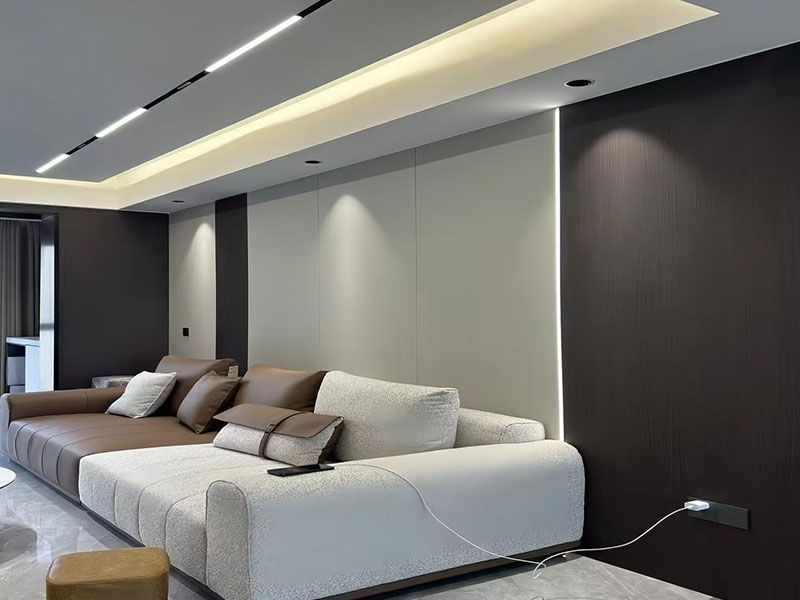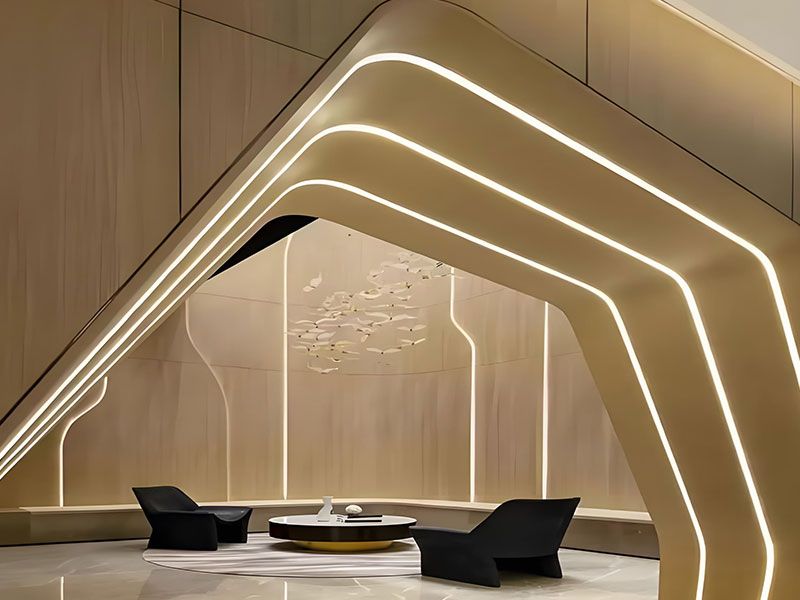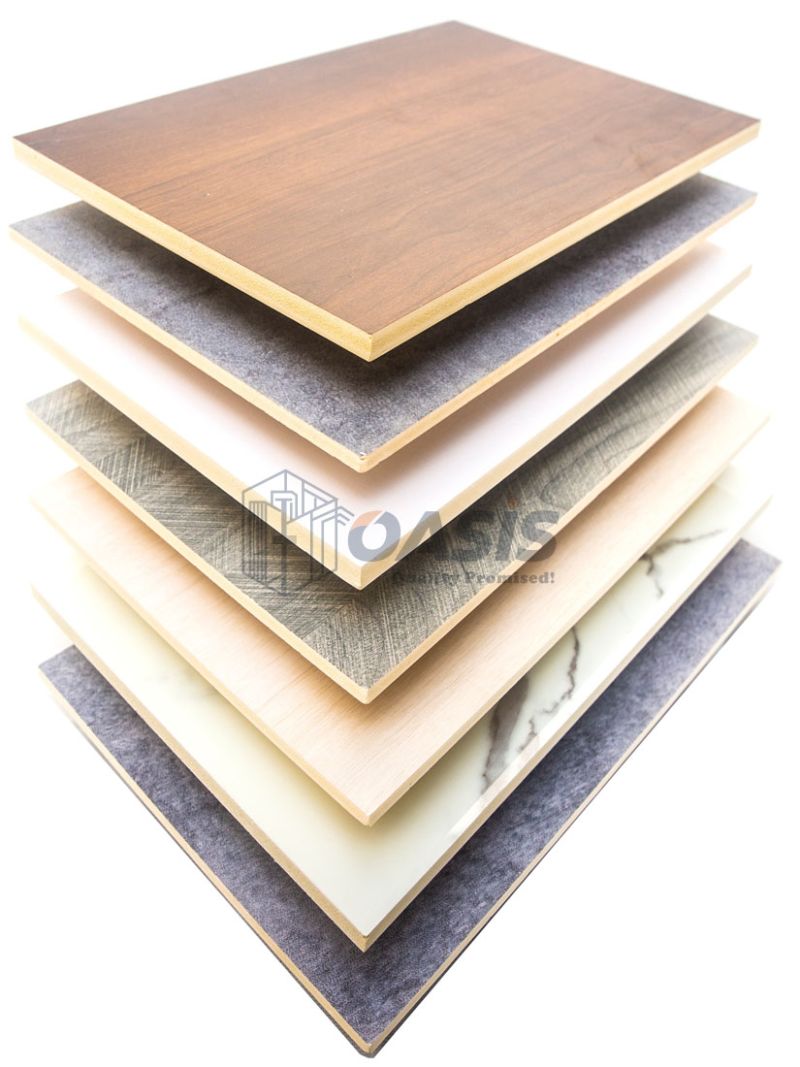Elevating Ambiance and Durability: PVC Wooden Veneer Wall Paneling for Hotels and Restaurants
In the highly competitive restaurant industry, creating an inviting and memorable atmosphere is just as crucial as the food and service. The right interior design can significantly enhance the dining experience, influencing customer comfort, perception, and even their willingness to return. This is where PVC wooden veneer wall paneling emerges as a superior solution, offering restaurateurs an ideal blend of aesthetic warmth, robust durability, and practical functionality.
The Challenge: Balancing Aesthetics with Functionality in Restaurant Design
Restaurants are high-traffic environments that demand materials capable of withstanding constant use, frequent cleaning, and potential spills, all while maintaining a sophisticated and welcoming appearance. Traditional wood paneling, while beautiful, often comes with concerns about moisture damage, scratching, maintenance, and cost. PVC wooden veneer directly addresses these challenges, providing an attractive alternative without compromise.
Why PVC Wooden Veneer is Perfect for Restaurant Walls
Here’s a breakdown of the compelling benefits that make PVC wooden veneer wall paneling an excellent choice for any restaurant:
1. Inviting Aesthetic Appeal
The primary draw of wooden veneer is its ability to infuse a space with natural warmth, elegance, and a sense of comfort. PVC wooden veneer masterfully replicates the rich textures and diverse grain patterns of various wood species, from rustic oak to sleek walnut. This allows restaurants to create a wide range of atmospheres—from cozy and intimate to modern and sophisticated—that perfectly complement their brand and cuisine.
2. Exceptional Durability and Longevity
Restaurant walls endure a lot: chairs scraping, accidental bumps, and constant foot traffic. PVC veneer is designed for resilience. Its robust surface is highly resistant to scratches, scuffs, and impacts, ensuring that your restaurant's walls will look pristine for years, even in the busiest sections. This durability translates into lower renovation costs and less downtime.
3. Superior Hygiene and Easy Maintenance
In a food-service environment, hygiene is paramount. PVC wooden veneer's non-porous surface is a significant advantage. It doesn't absorb spills, liquids, or odors, making it incredibly easy to clean and sanitize. A simple wipe-down with a damp cloth and mild disinfectant is usually all it takes to remove food splatters, fingerprints, and dirt, ensuring a clean and appealing environment for diners. This also helps prevent the growth of mold, mildew, and bacteria.
4. Moisture Resistance
Kitchens, dishwashing areas, and even dining rooms can experience humidity and occasional spills. Unlike natural wood, PVC is inherently waterproof. This prevents swelling, warping, and discoloration that can plague traditional wood in damp conditions, making it a reliable choice for maintaining structural integrity and appearance.
5. Cost-Effectiveness
Achieving a high-end, wooden aesthetic with solid wood or even natural wood veneers can be a substantial investment. PVC wooden veneer offers a more budget-friendly alternative that delivers the same luxurious look without the prohibitive cost. This allows restaurateurs to allocate resources to other critical areas of their business without sacrificing design quality.
6. Design Flexibility
From accent walls that define dining zones to full wall cladding that creates a cohesive theme, PVC wooden veneer offers immense design flexibility. Available in a vast array of colors, patterns, and finishes (matte, glossy, textured), it can be customized to match any restaurant concept, whether it's a casual bistro, a fine-dining establishment, or a trendy cafe.
7. Pest Resistance
Restaurants, unfortunately, can be targets for pests. PVC is resistant to termites and other wood-boring insects, providing an additional layer of protection and peace of mind, especially in older buildings or areas prone to such issues.
Applications in Restaurant Spaces
- Dining Area Walls: Create a warm and inviting atmosphere.
- Bar Fronts and Backdrops: Enhance the visual appeal of the bar area.
- Host Stand Cladding: Make a strong first impression.
- Private Dining Rooms: Add a touch of exclusivity and sophistication.
- Cafeteria and Fast-Casual Eateries: Benefit from durability and easy cleaning.
- Restroom Walls: Maintain elegance and hygiene in high-use areas.
Conclusion
For restaurant owners and designers looking to strike the perfect balance between captivating aesthetics and uncompromising functionality, PVC wooden veneer wall paneling presents an intelligent and stylish solution. Its ability to mimic the beauty of wood while offering superior durability, hygiene, and cost-effectiveness makes it an invaluable asset in crafting dining spaces that not only look spectacular but also perform exceptionally under the rigorous demands of the hospitality industry. By choosing PVC wooden veneer, restaurants can ensure their walls contribute positively to both the diner's experience and the establishment's long-term success.



